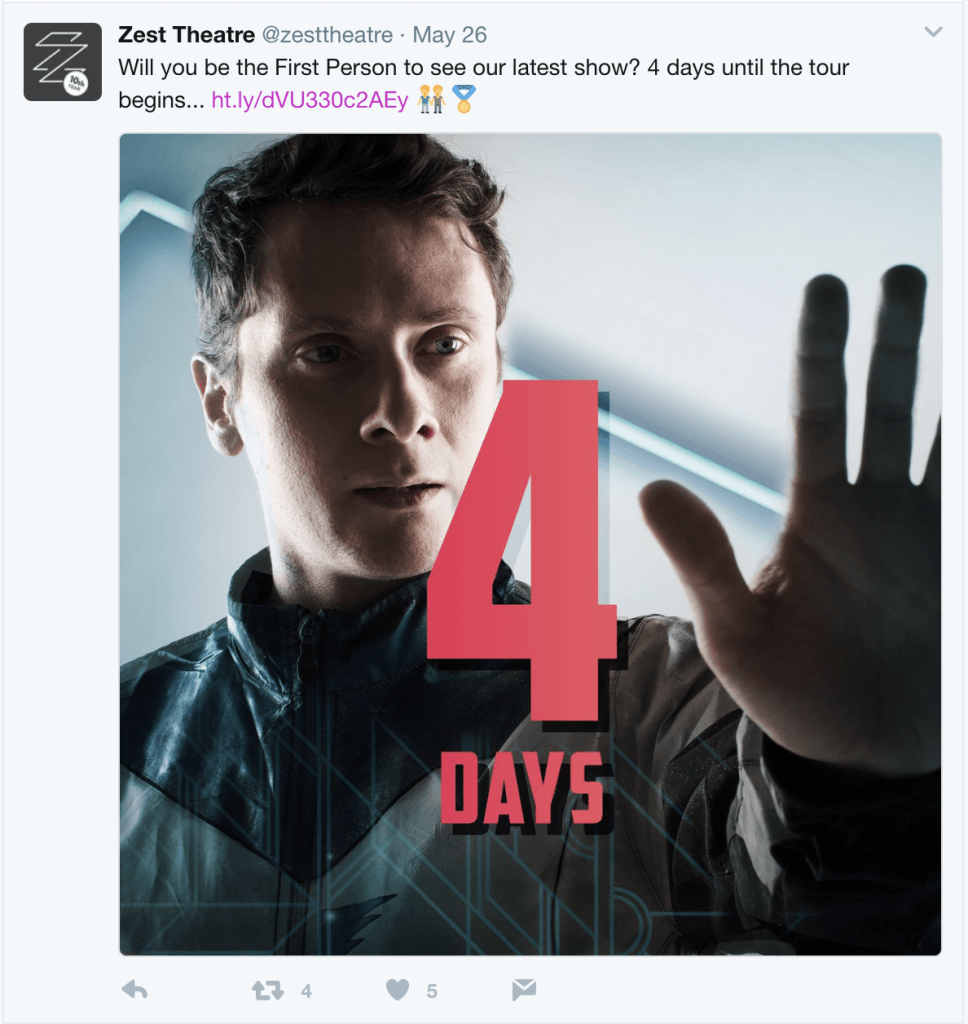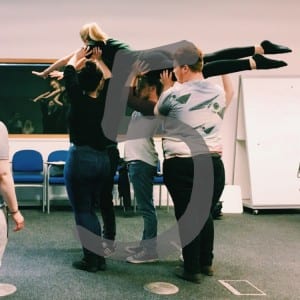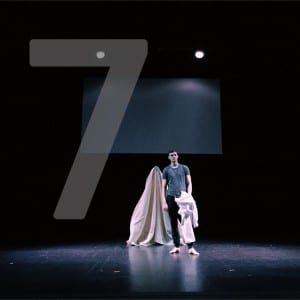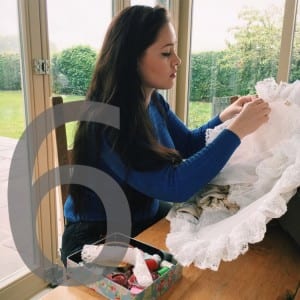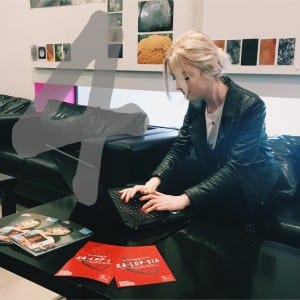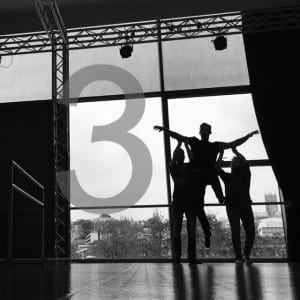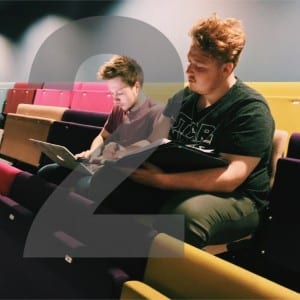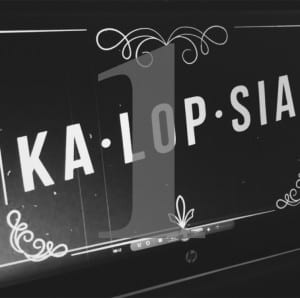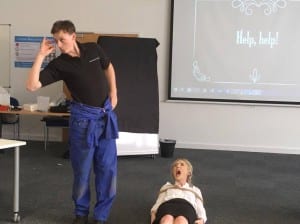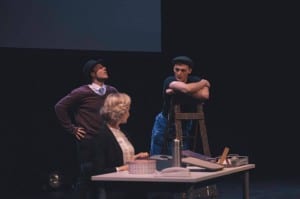Now Kalopsia is finally over, it now let me look at the bigger picture and reflect on the final performance. The show aimed to be a technically heavy show, filled with projections, audio and lighting. The creative design both me and Dan produced, was adventurous as well as testing, but seeing the show in its final form as something of a emotional moment.
Of course the difficulty lied in the correct balance real and imaginary, this gave me a challenge on two different scales. The first being, in the office scenes highlighting the reality, in these scenes the focus was making sure the sounds and the design for the aesthetic matched a naturalistic performance. Challenging me to make something ‘real’ yet visually interesting. Whereas, the second challenge the delusions, present me the complete opposite. The delusions gave me creative free reign, allowing me to explore different ideas as well as collaborate with various members of the company to make something beautiful. However, seeing the finished show on the stage, i had great pride in the delusions and their fantasy led breaks away from the main story, my personal favorite being Sams space delusion.
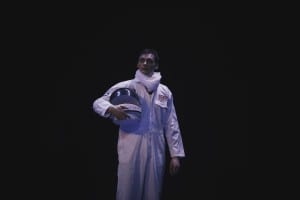
(Howard Rees-Jones, undated, cited in Facebook.com, 2017)
Although i could not say the same for the office scenes. I felt that although these scenes were meant to be very naturalistic i felt they lacked that extra feel of a office, of course the audience could understand where the performance took place due to the set design and the clinical lighting. Yet, i believed sound wise the office scenes needed more, if i were to reproduce this show I feel more noise should be added to the office, the sound of phones, computers, printers and the subtle murmur of works talking under their breathe, with these additions alongside the current set i believe the show would be regarded as even more of a spectacle.
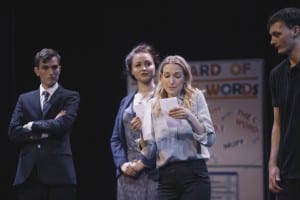
(Howard Rees-Jones, undated, cited in Facebook.com, 2017)
Finally, I would like to reflect on my secondary role i will be assessed on, my acting in the performance. Playing Simon held various challenges to my own acting abilities. Throughout my acting career at university i have usually been the comic relief role, playing the comedy to add energy to the performance, however, Kalopsia presented me with the something completely different. My character Simon was the villain of the performance, full of menacing lines and a dark stage presences whenever he was on stage.
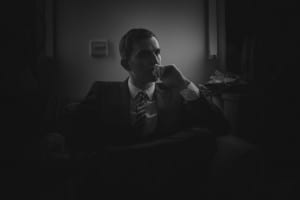
(Howard Rees-Jones, undated, cited in Facebook.com, 2017)
playing, the villain was different for me, it made all of my knowledge of acting to relearn. All of my energy i usually hold on stage had to be changed as my normal performance style would not match Simon’s stage presences. To counter act this, i had to work closely with our director Dwain, to learn how to pull away from being comedic, but after weeks of practice I learnt to redirect my energy to but instead of having a comedic presence change it to a dark powerful presence on stage.
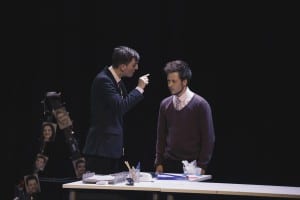
(Howard Rees-Jones, undated, cited in Facebook.com, 2017)
Overall, Kalopsia allowed me to create a visually stunning as well as challenging my acting. I allowed me to see what as a actor and a theatre maker what i am able to achieve. I think the show has made me understand how diverse my acting can be, as well as taught me how to improve my range as a actor. Therefore, I am sad to see such a brilliant show draw to a close, however, i hope this is not the end of Kalopsia or The Pin Hinge Collective, as the feedback our show received was very clear the audiences wanted to see more of the show, making me believe that our hour long production can be extended even further.
Works Cited
Howard Rees-Jones, G. (undated) Kalopsia. [online] Lincoln: Lincoln Performing Arts Centre. Available from https://www.facebook.com/ghrjmedia/?fref=mentions [Accessed 29 May 2017].
